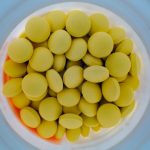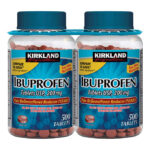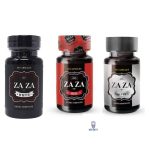How Long Does It Take For You To Get Addicted To Tianeptine

Tianeptine (Zaza Drug) also known by its brand names Stablon, Coaxil, and Tianeurax, is an atypical antidepressant that was first discovered and developed in the 1960s by French researchers.
Tianeptine has gained attention in recent years due to its potential for abuse and addiction. Tianeptine was first introduced in France in 1989 and received approval as an antidepressant. It was marketed under the brand name Stablon and was primarily prescribed for the treatment of major depressive episodes.
Following its approval in France, tianeptine gained popularity and began to be prescribed in several other countries, including other European nations, Asia, and some Latin American countries. It has been used as a treatment for various forms of depression, anxiety disorders, and even post-traumatic stress disorder (PTSD) in some regions.
However, it has also gained popularity as a recreational drug due to its opioid-like effects. While therapeutic doses of tianeptine are generally well-tolerated, misuse or abuse of the drug can lead to various adverse effects, including toxicity.
This article aims to explore the topic of tianeptine addiction, including the factors that contribute to addiction, the timeline of addiction development, and the importance of seeking help for those struggling with tianeptine addiction.
How Tianeptine works
Tianeptine is a unique antidepressant that is believed to work through multiple mechanisms of action. While the exact mechanisms are not fully understood, here are the primary ways in which Tianeptine is thought to exert its effects:
1. Enhancement of serotonin reuptake: Tianeptine increases the reuptake of serotonin in the brain, leading to higher levels of this neurotransmitter. Serotonin is involved in regulating mood, emotions, and overall well-being. By enhancing serotonin reuptake, Tianeptine helps maintain optimal levels of serotonin in the brain.
2. Modulation of glutamate receptors: Tianeptine has been found to modulate glutamate receptors, particularly the AMPA receptors. Glutamate is the primary excitatory neurotransmitter in the brain, and its dysfunction has been implicated in depression. By influencing glutamate receptors, Tianeptine may help restore the balance of glutamate neurotransmission, which could contribute to its antidepressant effects.
3. Neuroplasticity enhancement: Tianeptine is thought to promote neuroplasticity, which refers to the brain’s ability to reorganize and form new connections between neurons. It has been observed to increase the release of brain-derived neurotrophic factor (BDNF), a protein that plays a crucial role in neuronal growth, survival, and synaptic plasticity. By enhancing neuroplasticity, Tianeptine may facilitate the formation of new neural circuits and contribute to the antidepressant effects.
It’s worth noting that Tianeptine has a unique pharmacological profile compared to other antidepressants. While most antidepressants fall into classes such as selective serotonin reuptake inhibitors (SSRIs) or serotonin-norepinephrine reuptake inhibitors (SNRIs), Tianeptine does not belong to these classes and has a different mechanism of action.
Factors Contributing to Tianeptine Addiction
Several factors influence the development of addiction to tianeptine. These include:
1. Dosage and Duration: Higher doses and longer durations of tianeptine use increase the risk of addiction. Regular, prolonged use can lead to tolerance and dependence, requiring higher doses to achieve the desired effects.
2. Psychological Factors: Individuals with a history of substance abuse, mental health disorders, or a tendency toward addictive behaviors may be more susceptible to tianeptine addiction.
3. Genetic Predisposition: Genetic factors can influence an individual’s susceptibility to developing an addiction. Variations in genes involved in the reward and pleasure pathways may contribute to the development of addiction to substances like tianeptine.
4. Co-occurring Disorders: People with co-occurring mental health disorders, such as anxiety or depression, may be at a higher risk of developing tianeptine addiction as they seek relief from their symptoms.
Tianeptine Toxicity
Tianeptine toxicity can occur when the drug is taken in excessive amounts or in combination with other substances, such as opioids or benzodiazepines. The drug acts on the opioid receptors in the brain, producing analgesic and euphoric effects. However, at high doses, tianeptine can lead to respiratory depression, sedation, and even overdose.
Symptoms of tianeptine toxicity may include:
1. Respiratory depression: Slowed breathing or difficulty breathing.
2. Sedation: Extreme drowsiness or loss of consciousness.
3. Confusion: Disorientation, memory problems, or impaired cognitive function.
4. Seizures: Tianeptine has been associated with an increased risk of seizures, particularly in cases of overdose.
5. Cardiac effects: Tianeptine can cause changes in heart rate and blood pressure, which can be dangerous in high doses.
If you suspect tianeptine toxicity, it is essential to seek immediate medical attention. Overdose or toxicity can be life-threatening, and medical professionals can provide the necessary support and treatment, such as naloxone administration to reverse the opioid effects.
How long does it take for tianeptine to get out of your system?
The elimination half-life of tianeptine, which refers to the time it takes for half of the drug to be cleared from the body, is approximately 2.5 to 3 hours. Based on this information, it can be estimated that tianeptine will be eliminated from the body within a few days after discontinuing its use.
However, it’s important to note that individual factors, such as age, liver function, metabolism, and overall health, can influence the clearance rate of tianeptine from the body. Additionally, chronic or high-dose use of tianeptine may result in the accumulation of the drug and its metabolites, prolonging the time it takes for complete elimination.
Timeline of Tianeptine Addiction
The timeline for tianeptine addiction can vary depending on individual factors, including dosage, duration of use, and personal susceptibility. However, a general progression of addiction can be observed:
1. Initial Use and Pleasurable Effects: Tianeptine may initially be used as prescribed, resulting in therapeutic effects. Some individuals may also experience a sense of euphoria, relaxation, or heightened well-being, especially when misusing higher doses.
2. Increased Frequency and Dosage: As tolerance develops, individuals may increase the frequency and dosage of tianeptine to maintain the desired effects. This phase often marks the transition from controlled use to problematic use.
3. Dependence and Withdrawal: With continued use, dependence on tianeptine can develop. When attempting to reduce or stop use, individuals may experience withdrawal symptoms such as anxiety, depression, irritability, and physical discomfort.
4. Compulsive Use and Loss of Control: As addiction progresses, individuals may experience an overwhelming compulsion to use tianeptine, often at the expense of other aspects of their life. Control over use diminishes, and negative consequences become more apparent.
Given these factors, addiction to tianeptine can potentially develop within weeks or months of regular, high-dose use, anecdotal evidence suggests that withdrawal symptoms can set in within 4 to 7 hours and addiction to the drug develops in as early as 5 days. However, it’s important to remember that addiction is a complex process and can vary widely among individuals. Some people may develop addiction more rapidly, while others may take longer or not develop addiction at all.
Seeking Help for Tianeptine Addiction
Recognizing the signs of tianeptine addiction and seeking help is crucial. Addiction is a complex condition that requires professional support and treatment. Options for addressing tianeptine addiction may include:
1. Medical Detoxification: In cases of physical dependence, supervised medical detoxification may be necessary to manage withdrawal symptoms safely.
2. Behavioral Therapies: Counseling and behavioral therapies, such as cognitive-behavioral therapy (CBT) or contingency management, can help individuals address the underlying issues contributing to their addiction, develop coping strategies, and prevent relapse.
3. Support Groups: Participating in support groups, such as 12-step programs or group therapy, can provide individuals with a sense of community, understanding, and encouragement during their recovery journey.
4. Medication-Assisted Treatment: In some cases, medications may be used as part of a comprehensive treatment plan to aid in the management of cravings and withdrawal symptoms. These medications, such as opioid receptor antagonists or agonists, are prescribed under the supervision of a healthcare professional.
5. Holistic Approaches: Complementary therapies like mindfulness meditation, yoga, exercise, and nutritional support can play a supportive role in overall recovery and well-being.
Conclusion
Tianeptine, while originally developed as an antidepressant, carries the potential for abuse and addiction. Factors such as dosage, duration of use, psychological predisposition, and co-occurring disorders can influence the development of addiction. The timeline of addiction progression can vary, but it often starts with initial pleasurable effects, leading to increased frequency and dosage, dependence, and eventual loss of control.
Recognizing the signs of tianeptine addiction and seeking professional help is essential. Treatment options, including medical detoxification, behavioral therapies, support groups, and medication-assisted treatment, can aid individuals in their recovery journey.
If you or someone you know is struggling with tianeptine addiction, it is important to reach out to healthcare professionals, addiction specialists, or helplines to get the support needed to overcome addiction and regain control of one’s life. Remember, recovery is possible with the right help and support.





